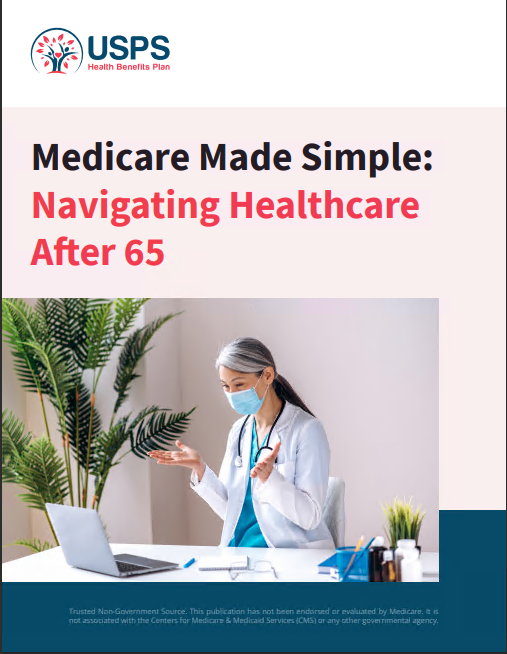Key Takeaways
-
Missing your PSHB enrollment deadline in 2025 could result in permanent loss of your health coverage or higher costs later.
-
There are only limited windows to enroll or make changes, and exemptions are very specific—most USPS retirees and employees are required to act within those windows.
What PSHB Enrollment Means for You in 2025
The Postal Service Health Benefits (PSHB) Program officially replaces Federal Employees Health Benefits (FEHB) coverage for United States Postal Service (USPS) employees and annuitants starting January 1, 2025. Whether you’re currently working or retired, this shift changes how you maintain your health insurance coverage. And missing your enrollment deadline? That’s a costly mistake you don’t want to make.
PSHB enrollment isn’t just another routine task. It determines if you and your eligible family members will maintain uninterrupted healthcare in 2025 and beyond.
Who Must Enroll and When
You’re required to enroll in PSHB during specific timeframes, depending on your employment status and eligibility:
-
If you’re a USPS employee or annuitant currently enrolled in FEHB: You are automatically enrolled in a corresponding PSHB plan unless you actively make a different selection during Open Season.
-
If you’re not enrolled in FEHB: You must enroll in PSHB during the Open Season period or a qualifying life event.
-
If you are Medicare-eligible: You may need to prove Medicare Part B enrollment to remain eligible for PSHB benefits.
Key Enrollment Periods:
-
Open Season (November to December 2024): The primary opportunity to select your PSHB plan for 2025.
-
Special Enrollment Period (April to September 2024): For certain Medicare-eligible annuitants to enroll in Part B and ensure PSHB eligibility.
Missing these windows means facing costly and sometimes irreversible consequences.
What Happens If You Miss the Deadline?
Failing to act in time can result in one or more of the following:
-
Loss of Coverage: If you don’t select a PSHB plan and aren’t eligible for automatic enrollment, you could lose your federal health benefits entirely.
-
Gaps in Coverage: Even temporary delays in enrolling can leave you without access to essential healthcare services for months.
-
Late Enrollment Penalties: Particularly for Medicare Part B, delayed enrollment can lead to permanent increases in your monthly premium.
-
Limited Future Opportunities: Once the Open Season ends, you can only make changes during future Open Seasons or if you experience a qualifying life event.
Why Medicare Part B Enrollment Matters
For many retirees, PSHB eligibility is tied to being enrolled in Medicare Part B. If you or your covered family members are eligible for Medicare and do not enroll in Part B when required, you risk losing access to PSHB coverage.
Medicare Part B is Mandatory for Most
As of 2025, the following groups must be enrolled in Medicare Part B to keep their PSHB coverage:
-
USPS annuitants who are Medicare-eligible (except those who retired on or before January 1, 2025)
-
Medicare-eligible family members of annuitants
Failure to enroll in Part B when required will disqualify you from PSHB unless you qualify for a narrow exemption.
Exemptions and Special Cases
There are a few narrowly defined exemptions for the Medicare Part B requirement:
-
You retired on or before January 1, 2025, and are not already enrolled in Part B.
-
You are actively working and are age 64 or older as of January 1, 2025.
-
You live abroad in a country where Medicare isn’t available.
-
You receive care through the Department of Veterans Affairs (VA) or Indian Health Services (IHS).
Outside of these exemptions, you are expected to enroll in both PSHB and Medicare Part B. Don’t assume you qualify—verify your status.
The Financial Risks of Missing the Deadline
Even if you’re automatically enrolled in a PSHB plan, failure to manage your Medicare Part B requirement or to select a plan suited to your needs can result in long-term financial issues.
Potential Financial Impacts Include:
-
Higher Premiums: If you miss the deadline to enroll in Medicare Part B, you may be subject to a permanent late enrollment penalty of up to 10% for each 12-month period you delay.
-
Increased Out-of-Pocket Costs: Without coordination between Medicare and your PSHB plan, you may pay more for services that would otherwise be covered.
-
Prescription Drug Gaps: If you fail to stay enrolled, your integrated Medicare Part D drug coverage could be lost, leading to higher drug costs.
Coordinating PSHB With Medicare: A Cost-Saving Strategy
If you’re eligible for Medicare, enrolling in both PSHB and Medicare Part B can lead to significantly lower out-of-pocket costs. Most PSHB plans are designed to work alongside Medicare and offer the following advantages:
-
Reduced or waived deductibles
-
Lower copayments and coinsurance
-
Access to a broader network of providers
-
Drug coverage integrated through Medicare Part D
Missing your PSHB deadline not only risks losing access to this coordination—it could mean paying hundreds or even thousands more annually for medical care.
What to Do If You’re Unsure About Your Status
Given the complexity of the PSHB transition, you may not be certain about your eligibility, enrollment requirements, or whether you need to take action. Here are a few immediate steps you should consider:
-
Confirm your Medicare eligibility and enrollment status.
-
Log into your LiteBlue or KeepingPosted portal (for employees and annuitants, respectively) to check your current benefits.
-
Contact a licensed agent listed on this website for assistance with plan selection and Medicare coordination.
-
Review PSHB plan brochures thoroughly before Open Season begins.
Long-Term Effects of Inaction
The consequences of missing your PSHB enrollment deadline don’t just affect 2025. They can follow you for years:
-
You may become permanently ineligible for PSHB.
-
You may have to rely solely on Medicare without additional coverage.
-
If you re-enroll later, you might face higher costs or limited plan options.
Avoiding this outcome requires prompt and informed decision-making.
How to Stay Ahead of Future Enrollment Deadlines
Now that PSHB is in place, this isn’t a one-time concern. Every Open Season moving forward will require you to assess your coverage and make updates as needed.
Tips to Stay on Track:
-
Mark Open Season dates on your calendar each year.
-
Subscribe to official USPS or OPM updates.
-
Revisit your Medicare and PSHB coordination annually to ensure your needs are being met.
-
Keep documentation of your Medicare Part B enrollment and exemptions if applicable.
Make the Right Move Before It’s Too Late
Your health coverage is one of the most valuable benefits you have as a USPS employee or retiree. The new PSHB program adds new rules, tighter deadlines, and a closer connection to Medicare enrollment.
If you ignore your enrollment responsibilities, the financial and health-related consequences could last for the rest of your retirement. Don’t wait until it’s too late—take action during Open Season or speak with a licensed agent listed on this website to make informed decisions about your PSHB coverage.











